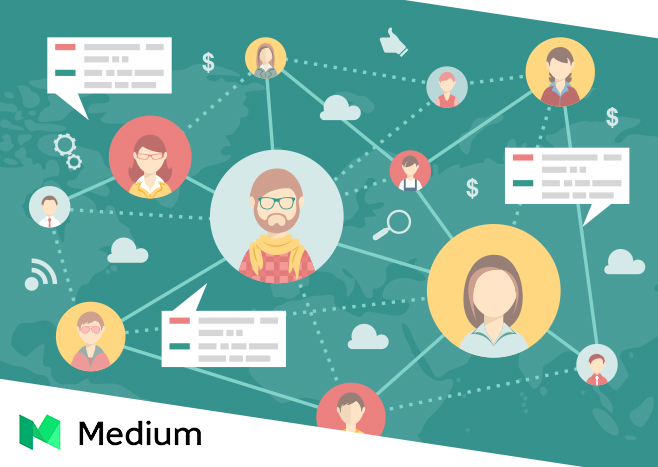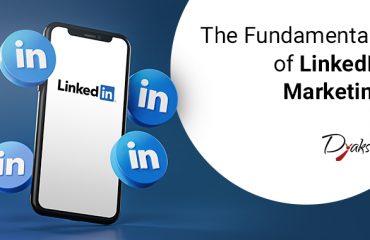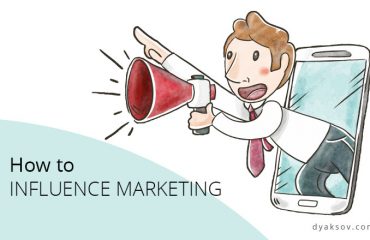What is Medium?
A little over a year ago, we witnessed a rather quiet revolution in the world of social networks – a new website created by two of Twitter’s co-founders. Yes, we’re talking about Medium. At the beginning, writing for Medium was a privilege as only invited authors could publish their articles, whereas all others were left with the joy of reading. Now, Medium is the new online place where people share ideas and stories that are longer than 140 characters, and are not limited only to your friends.
Although it may seem as your standard blogging platform, the “social media for those who have something to say” is built in a way that allows you to create your own short stories, as well as a full-scale manifesto that can greatly impact people’s day-to-day lives.
Within the last year, Medium has advanced to being one of the leading blogging platforms, and in that role it has managed to establish a quiet hegemony within the world of social media sharing – one in every five top-trending viral articles was shared from Medium.
If we examine Medium’s core and strategy, we will notice the following:
-
Medium is an easy to use platform with beautiful interface;
-
Making Medium available to the general public of bloggers was a slow process; this helped preserve the initial emotional bubble;
-
Medium pays for some of its content;
-
Medium promotes the authors whose articles have been requested (commissioned).
All this leads us to believe that Medium is not just another blog platform with a few extra resources than usual, but something quite different. Sometimes when I read reputable publications such as The Guardian or The Economist, it happens that I skip a few articles. Yet when I come across those same articles in Medium, I think “Wow! How is that possible?”
Slowly but surely, Medium has become a machine for generating great amounts of traffic. In that way, a publication can last for days, sometimes months, which in reality has turned this “lengthy Twitter” into something much more than just a blogging system – Medium has become a killer of orthodox magazines!
Actually, the strategy of Medium itself does not vary drastically from any other platform, but there is one major difference – natural selection. What does that mean? The publications that are not worth the reader’s attention just sink down into the abyss, and only those that are substantial, interesting and engaging stay afloat the internet surface.
How Facebook met the challenge?
Don’t think that Mark Zuckerberg and his associates stood by unbothered, drinking a cup of tea. Notes, the long-forgotten instrument for creating long publications, was left in the past, but is now resurfacing once again – improved and spruced up under a new name: Instant Articles. Indeed, the martyr of social media is still here, yet Instant Articles aims to innovate the way an article gets to its readers.
In the past, all of us who were working in social media marketing knew one simple and easy routine – write, edit, publish, share in social media and track the traffic. Well, it’s time to forget that last step and to announce that the traffic stays in Facebook.
Yes, the traffic that you generate will not go to a particular web page, instead it will stay within your Facebook business page, because Instant Articles does what Facebook could not – as opposed to just scrolling, it keeps people on social media reading long enough to convince entrepreneurs to splurge money on advertising in Instant Articles.
With its maximum length of 50 000 symbols (which is quite a bit), Facebook says it will not easily give in to the challenges that modern blogging platforms present. Medium is a catalyst that revealed how a world of readers can generate up to 30 times more traffic than a world of sleeping “scrollers”.
For now, Instant Articles can be used only via special request on the specialized page of the project. This way the largest social media can offer what both business and readers have been longing for – quality content directly from the world’s largest blogs, Medium included.
Medium and the brands
We live in a time that obligates us to fight for our clients in every possible known way, including the use of the established methods of content marketing. Medium gives you an audience that is there not to dig up gossip on celebrities, but to read something important and meaningful. At this point the marketer in you might be feeling very pleased, but things are not that simple.
Success is obtained when your brand manages to address its message to a pressing issue or a certain small audience that is directly interested in your brand. But how do we do that?
There is a great number of copywriters that are capable of working wonders as long as they are given a proper environment to work with – and what could be a better, more prestigious choice than… Medium?
Will Medium gain popularity in Bulgaria?
The short answer would be… most probably NOT. For countries like Bulgaria, Medium will remain approachable only to a small selected group of English-speaking readers, who love to read, learn and get inspired by interesting non-mainstream authors.
As for the Bulgarian bloggers and marketing specialists, this is a unique opportunity to reach out to an international audience with hundreds of thousands of readers worldwide, through quality online content.
So… What is Medium?
As it turns out, Medium was the right idea, at the right time, with the right audience. We are willing to bet that in Medium you can find all the information you need on a given topic. Yet one question remains – what makes Medium larger and better than Blogger and WordPress? The audience! It’s an audience of readers and there’s a huge chance that your particular article will be read.






